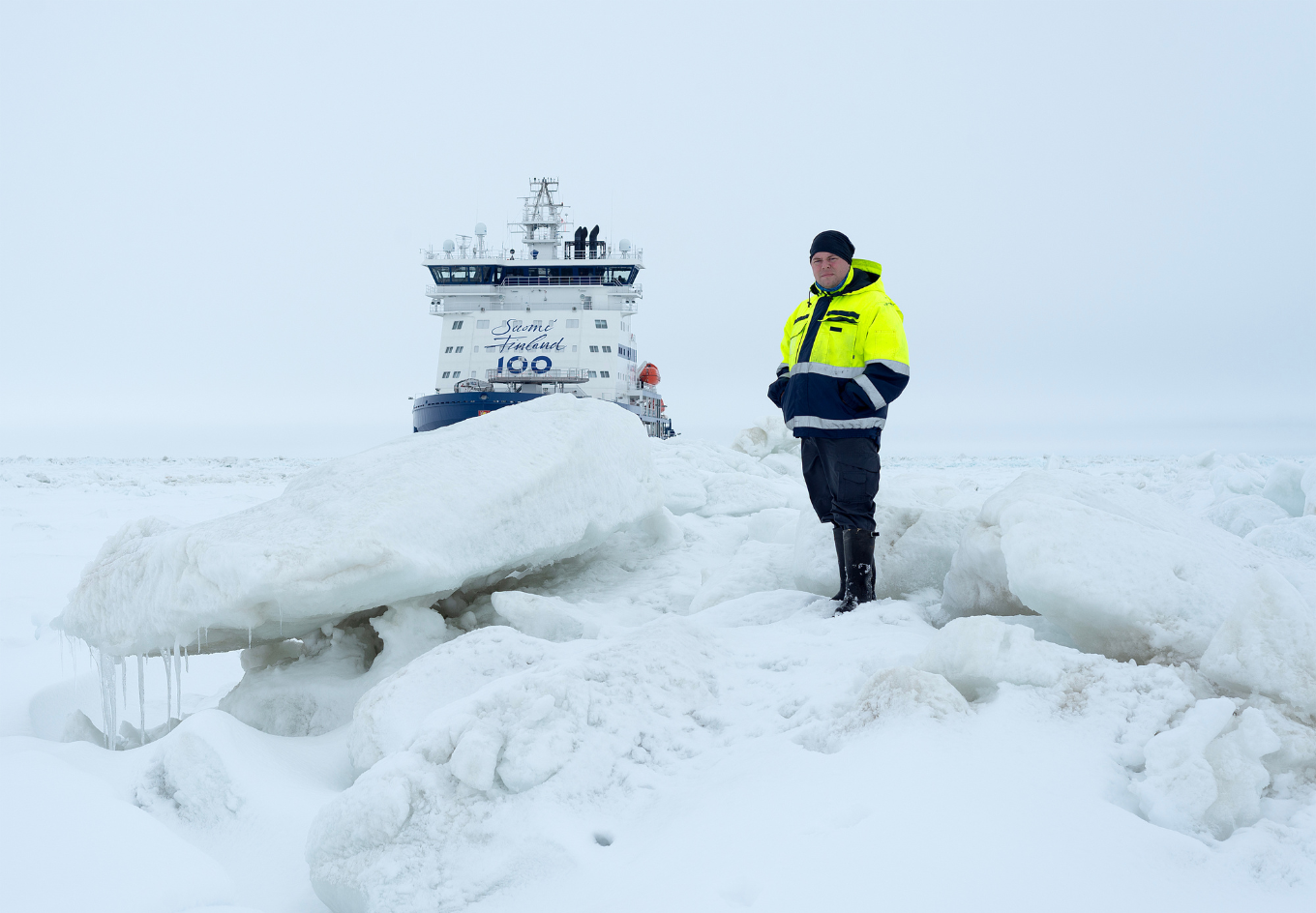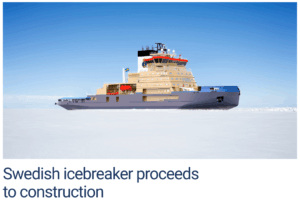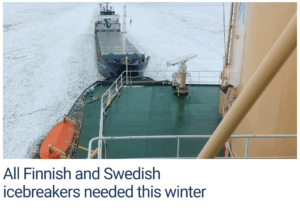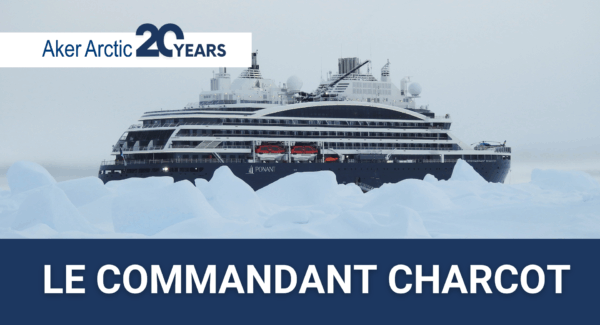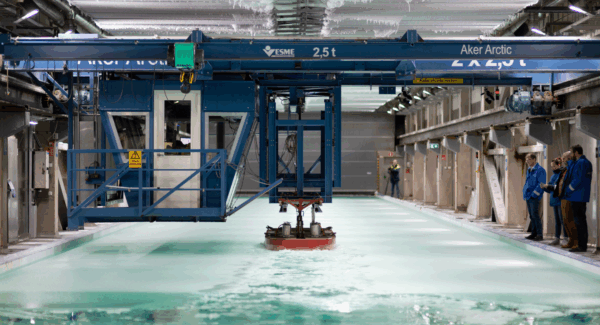New icebreaker to be designed for Finland
The Finnish Transport Infrastructure Agency has awarded Aker Arctic Technology the design contract for a state-of-the-art icebreaker that incorporates the latest technology.
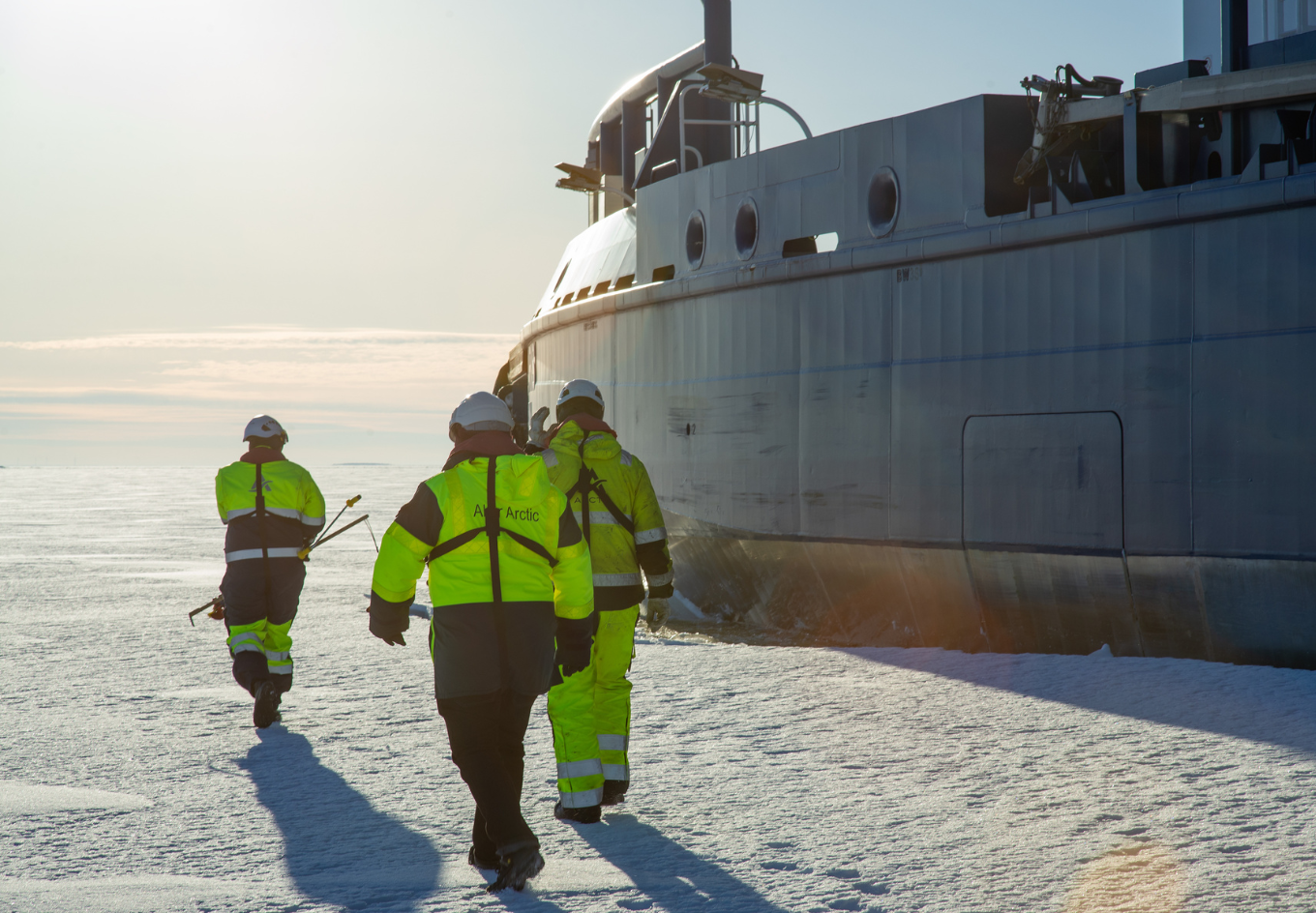
Finnish icebreakers are classified based on a three-tier system with Class A being the largest and most powerful, and Class C being more akin to a large ice-strengthened tug. Finland’s newest icebreaker Polaris, also an Aker Arctic design, belongs to the highest category, while Voima is the country’s sole B-class icebreaker.
Aker Arctic will develop at least two design packages for an intermediate-class icebreaker referred to as B+, a compact icebreaking vessel more capable than what the current requirements would call for in mid-tier icebreakers.
Meeting the changing operational environment
Future icebreakers must adapt to the changing ice regime in the Baltic Sea. The ongoing icebreaking season has yet again demonstrated how the ice fields tend to be more dynamic and heavily fragmented during mild winters, including wide slush barriers and areas of open water.
The prevailing ice conditions can thus be a major obstacle to commercial shipping and present challenges for the assisting icebreakers even when the ice cover is not particularly thick. This will require new thinking regarding the design criteria for the next generation of icebreakers.

As icebreakers are one of the cornerstones of the Baltic Sea winter navigation system, another design goal is to improve the overall operational efficiency. This ensures that the new icebreaker will not only be effective in its primary mission — assisting ships to and from Finnish ports — but also economical to acquire, operate, and maintain over the entire expected operational lifespan. The aim is for the new icebreaker’s service life to exceed 50 years. At the same time, the environmental footprint should be reduced.
Various options to be explored
The B+ project will commence with an evaluation of three alternative fuels – liquefied biogas, methanol, and ammonia – for their technological maturity and feasibility in this project. Afterwards, the Finnish Transport Infrastructure Agency will select one as the basis for the development of the B+ icebreaker concepts.
Furthermore, three propulsion configurations will be compared. In addition to twin- and triple-azimuth alternatives, a novel idea of combining shaft lines in the stern and azimuthing propulsion in the bow will be considered. At least two variants will be evaluated with model tests to verify their performance and ensure their ability to adapt to the changing operating environment.

Similarities to icebreaker developed for Sweden
While the design process closely mirrors the recent development of the next generation icebreakers for the Swedish Maritime Administration, the Finnish icebreaker is smaller and intended for a slightly different operational profile.
“The idea is to deploy a smaller vessel to the Bothnian Bay in early winter and move to the Bothnian Sea or Gulf of Finland later in the season,” says chief designer Tuomas Romu from Aker Arctic.
Nevertheless, many of the lessons learned from designing the icebreaker for Sweden can be applied in this project.
“Our thorough research in the previous project allows us to build on existing knowledge rather than start from scratch,” adds Romu. “However, alternative fuels and engine technology are developing very rapidly these days.”
Adherence to the tight schedule
The development of the three concept alternatives started in April 2025 and the final design packages are scheduled for delivery in early 2026. These can then be used for competitive tendering of the construction of the icebreaker.

The involvement of multiple members of the same team that developed, designed, ordered, and supervised the construction of icebreaker Polaris for Finland a decade ago is a significant advantage. Understanding the concept development process in general and having experience from developing icebreakers utilising the latest technology facilitates rapid decision-making and adherence to the tight schedule.

The development is part of the European Union’s Winter Navigation Motorways of the Seas (WINMOS) III-project, aiming to ensure safe and reliable winter traffic in the Baltic Sea. The Finnish Transport Infrastructure Agency has also applied for EU funding for the potential construction of the new icebreaker and decisions on this are expected in summer 2025.
The design concept will serve the needs of all three EU members by the northern Baltic Sea for new, updated icebreaking equipment, facilitate both joint procurements and the option to also build icebreakers for Sweden and Estonia in accordance with the same concept.
The photographs from the Bothnian Bay were taken by Aker Arctic’s head of structural design Juuso Lindroos during our team’s recent visit to the Finnish icebreaker Polaris. We would like to thank Arctia, and Captain Sampo Tammiala, for the opportunity to spend a few days onboard an operating Baltic Sea assistance icebreaker to gain valuable insight into the challenging operational conditions in the Bothnian Bay, despite the mild winter.
Text: Catarina Stewen
Meet Tuomas Romu
With a deep interest in past, present and future icebreakers, senior naval architect Tuomas Romu is widely known as the guy who not only can, but inevitably will, steer every conversation toward icebreaking ships.
Tuomas joined Aker Arctic as a trainee in 2011 and, after completing his master’s degree at Aalto University, became a full-time employee in 2013. In addition to studying naval architecture in Finland, he spent two semesters at the University Centre in Svalbard (UNIS) focusing on Arctic technology.
Despite once boldly proclaiming bow propellers as obsolete technology, Tuomas has been involved in every modern icebreaker featuring bow propulsion. He is the chief designer of four such icebreakers: the icebreaking support vessels Aleksandr Sannikov and Andrey Vilkitsky, the port icebreaker Ob, and the new Swedish icebreaker currently in procurement. He also participated in the full-scale ice trials of two others: the oblique icebreaker Baltika and the Finnish icebreaker Polaris.
An avid urban explorer in his free time, Tuomas has been photographing abandoned buildings for more than three decades. He also enjoys commemorating life’s major and minor milestones — birthdays, a car passing its annual inspection, and so on — by baking cakes and cinnamon rolls for his colleagues.
